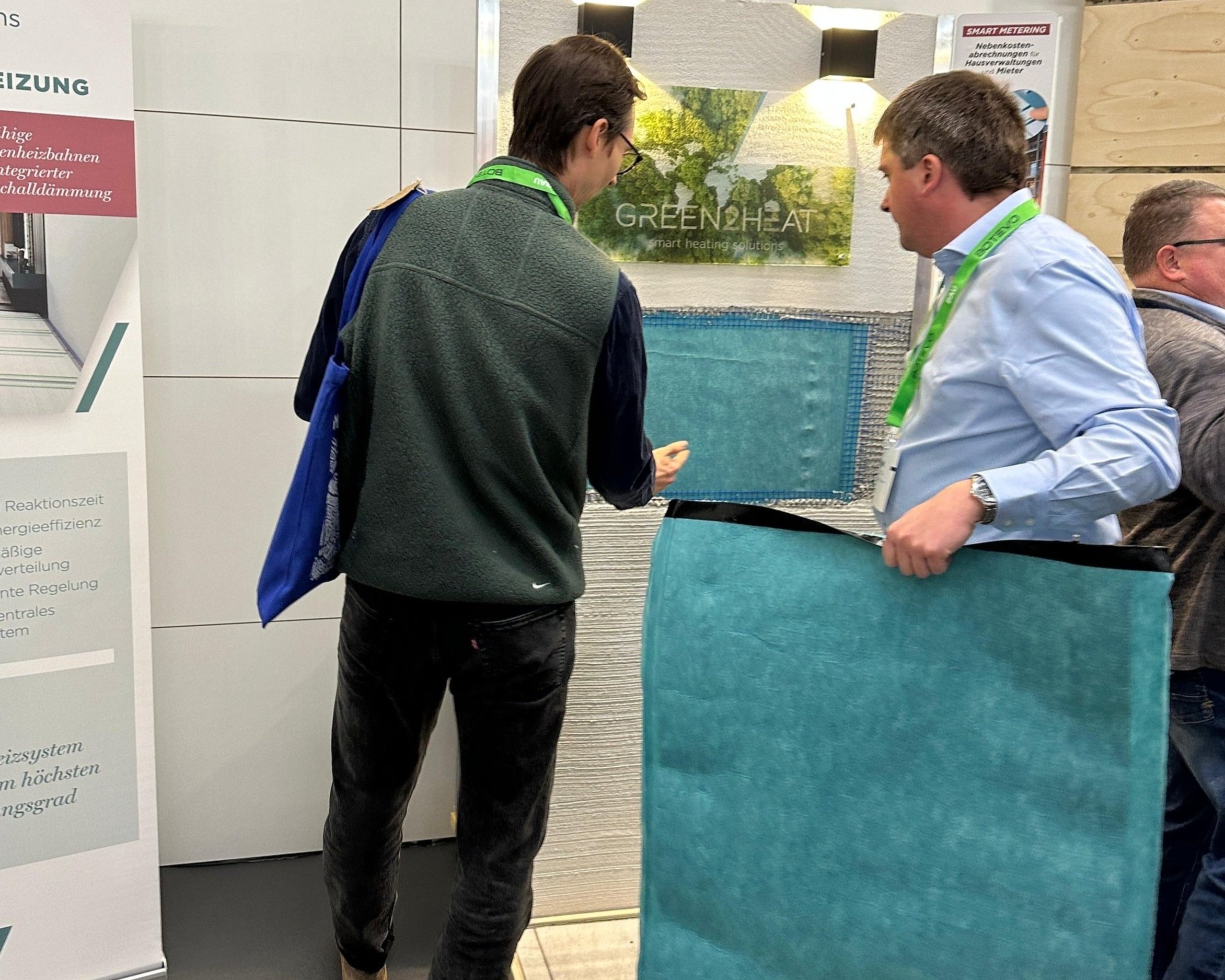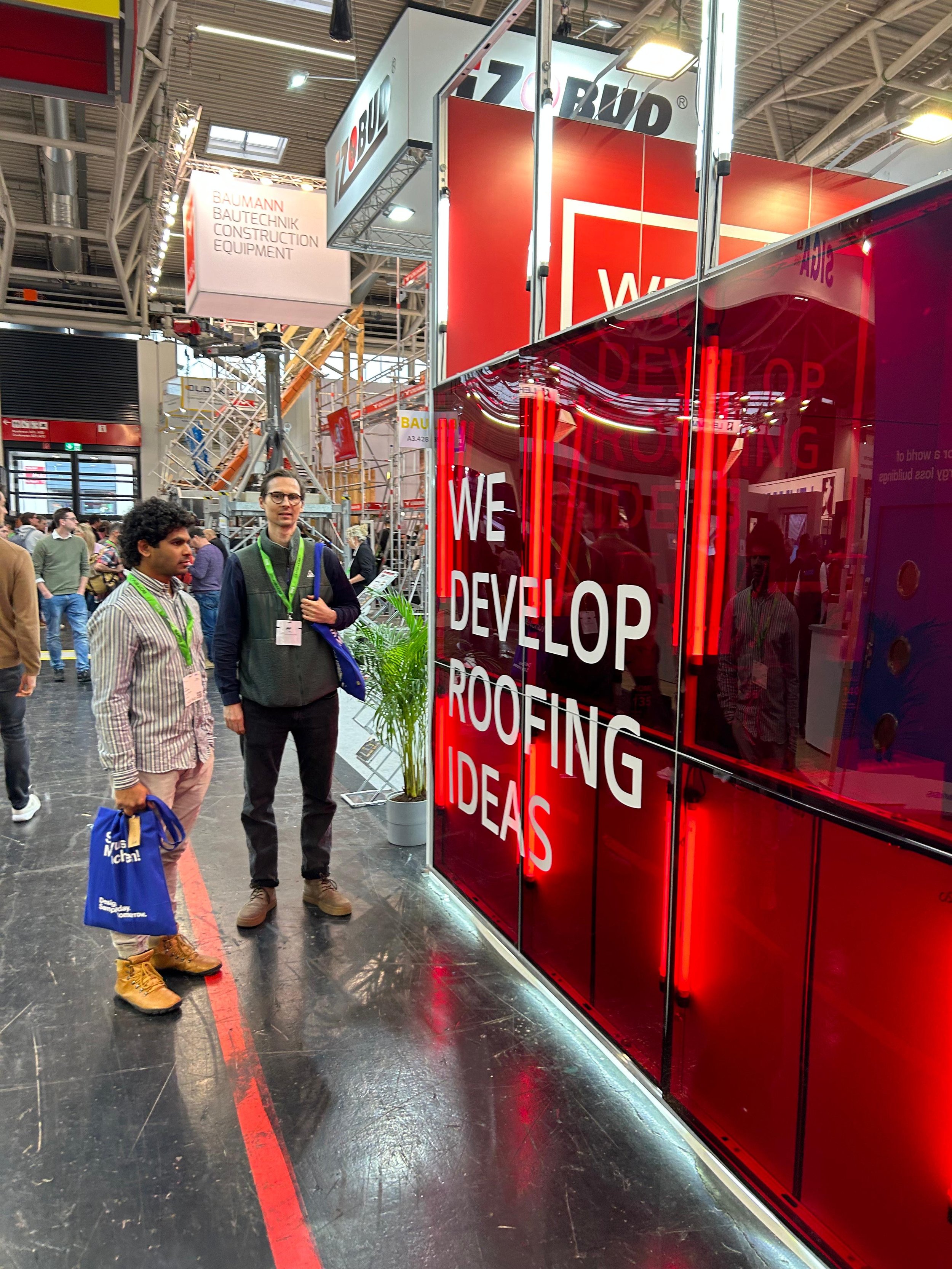Exploring the Future of Construction: The HP Lab Team Visits "Die Bau" in Munich
Last week, the Happy Pigeons Lab Team traveled to Munich to attend Die Bau – one of Europe’s largest trade fairs for the construction industry. Our goal was to strengthen team connections while exploring innovative materials and solutions that might be relevant for our future projects. The trip provided some interesting insights but also highlighted the challenges the industry faces in adopting sustainable practices.
Key Discoveries
Material Bank
Material Bank was one of the most practical solutions we encountered. It is a platform where samples from a wide range of manufacturers can be selected and ordered in one place. This makes it easier for architects and designers to explore materials efficiently, especially when working on tight deadlines.
Ceewood Acoustic Panels
Ceewood presented acoustic panels made from wood residues combined with cement. The panels have strong acoustic performance and a high-quality look. Unfortunately, due to the use of cement as a binder, this product doesn’t align with our focus on sustainable materials. Nevertheless, it was an impressive example of utilizing wood waste to create functional building solutions.
Paludi Allianz / Tomoorow
The Paludi Allianz showcased an innovative approach to construction using wetland plants such as reeds and Cattails. These plants are harvested and processed into building materials, offering a renewable and sustainable alternative to conventional options. Projects like this demonstrate how natural resources can be integrated into modern construction in a way that respects ecosystems while reducing waste.
Circular BioFloor by ParaStruct
The Circular BioFloor by ParaStruct is a flooring solution made entirely from biowaste. This product provides a sustainable and circular alternative to traditional chipboard, particularly in floor structures. Its eco-friendly composition and strong performance could be a promising option for projects looking to reduce their environmental impact.
Talk by Martin Rauch on Rammed Earth Construction
One of the highlights of the event was a talk by Martin Rauch, a leading figure in rammed earth construction. Rauch emphasized the potential of clay as a sustainable building material and the importance of integrating it into mainstream construction.
Interestingly, his talk drew a large audience, particularly younger attendees of all genders – a contrast to the rest of the event, which was predominantly male and over 40. We had the opportunity to speak briefly with Rauch afterward about the need for subsidies and policies that support natural materials. His perspective underscored the role of advocacy in driving meaningful change in the building sector.
Reflections on the Event
While we encountered several interesting materials and ideas, the overall focus of the fair was still heavily geared toward conventional construction practices. Around 95% of the exhibitors presented traditional materials, leaving only a small fraction dedicated to sustainability and innovation.
The audience profile and the prevalence of greenwashing at some stands further highlighted the traditional mindset that continues to dominate the construction industry. Many exhibitors made ambitious environmental claims, which were often not backed up by concrete evidence or practices.
Conclusion
Despite these challenges, our visit to Die Bau was valuable. It was an opportunity to engage with new ideas, learn about materials with potential for future use, and discuss the importance of sustainable approaches with like-minded professionals.
However, it’s clear that there is still significant work to be done to make sustainability a central focus in construction. Both the industry and its audience need to shift towards more innovative and eco-conscious practices to meet the growing demand for sustainable building solutions.
Our takeaway? There are exciting projects and ideas out there – but we’ll need more consistent efforts and systemic changes to see real progress.















